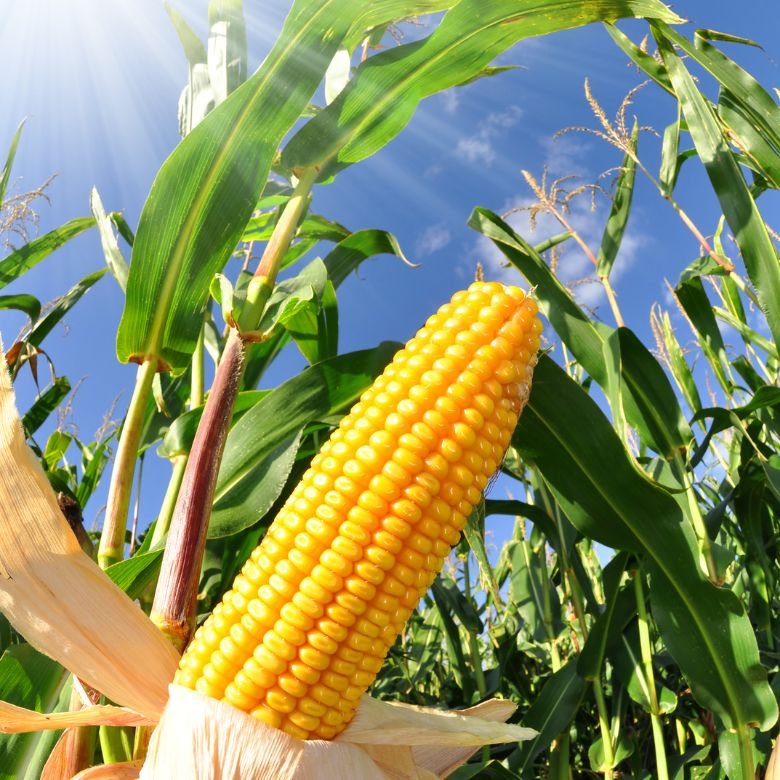Soil acidity largely determines the volume and quantity of maize yield. How to adjust the pH of the soil? One of the most efficient ways is liming, that is, providing the soil with different types of lime in the form of meals or granules. When is it best to plan it, and is it good to lime the soil in the spring? You will find the answers below.

Is it good to lime the soil in the spring?
Farmers starting to cultivate maize often have a lot of doubts about whether it is good to perform liming in the spring or if it is better to do it in late autumn. It turns out that there is no single, universal method of using lime-based fertilisers. There are two separate opinions on the technique for liming maize crops. Some producers and farmers believe that it is best to lime the soil in the autumn, after harvesting. Others think that lime should be spread in February or March.
If you plan liming in the spring, you should first analyse your soil samples. Collect them in different points of your field to be able to precisely determine the ground acidity and select the adequate fertiliser. For strongly acidic, heavy and non-permeable soils, it is recommended to lime both in the spring and in the autumn. For slightly acidic and permeable soils, additional liming in the spring is not always a good idea. There is a risk that the ground will become impoverished due to excessive amount of calcium carbonate.
How is spring liming helpful?
Maize is a species that does not perform well in an acidic soil. That popular crop grows best in a ground with a neutral pH. So if the soil on your field is acidic, perform regular liming in the spring to have an optimum yield. Why is liming in February or March beneficial? The list of benefits of liming is impressing; below we present the most important of them:
- crops grow faster and are resistant to pathogens,
- crops are more resistant to temporary shortage of water,
- maize leaves keep looking healthy and do not deform,
- the soil can easier retain all the nutrient contents necessary for the crops, such as magnesium, calcium, phosphorus, potassium, or manganese,
- a neutral ground favours the multiplication of soil building micro-organisms.
Thus, liming considerably improves the structure of the ground and the amount and quality of the nutrients it contains.
When to spread lime for maize?
Would you like to apply lime in the spring and are looking for some advice on when it should get into the ground? As any fertiliser, lime also needs some time to be able to integrate with the soil. For light soils, liming can be scheduled for around 3–4 weeks before the planned sowing of maize. If your soil is really thick and compact it will mix with lime very slowly, so consider liming it in the autumn or after you collect the forecrop.
When scheduling the liming, think about when you want to apply other types of fertilisers. This is because you should not combine different organic and inorganic compounds. A minimum of 2–3 weeks should pass between the consecutive stages of fertilisation, unless the manufacturers recommend otherwise.
Read also: field liming
Contemporary farmers with large-scale maize fields are increasingly using advanced measuring equipment to monitor soil quality. It includes intelligent systems integrated into farming machinery as well as the systems of sensors scattered around the fields, which monitor the soil parameters around the clock. Owing to such advanced equipment and the possibility to quickly analyse measuring data, farmers know when it is best to start liming.

What lime to use for maize in the spring?
The spring liming before sowing maize brings about various benefits, provided that you choose the right type of lime. Your options include granulated and powdered lime. Which fertiliser to choose? At the turn of February and March, when there are still over 4 weeks left until you start sowing, you can use granulated lime.
Which granulated lime for maize will perform best? One of the liming materials most often chosen by farmers is granulated calcium carbonate. It is a fertiliser that quickly and efficiently treats the soil when you introduce it down to at least 15 cm beneath the surface. For soils poor in magnesium, farmers often also use chalk-and-magnesium granulates or cover the soil on an ad-hoc basis with powdered chalk lime.
How to establish the lime demand before sowing maize?
Do you need to lime the soil every year? Of course not! Check your soil in the autumn and the spring so you can react in advance and buy some lime. How to quickly determine soil acidity? You can perform a simple test with:
- a manual acidometer with a probe,
- indicator papers that only have to be immersed in a diluted soil sample,
- a Hellig’s acidometer with a coloured pitch.
How to read the measuring data from acidometers? A pH value between 5.6 and 6.5 indicates a slightly acidic reaction. The acidic reaction remains at the pH levels from 4.6 to 5.5. Strongly acidic soils show a reaction at a level of 4.5 or lower. If the pH value drops below 6.5, it is a warning that you should lime your soil.
- https://www.tygodnik-rolniczy.pl/uprawa/wiosenne-wapnowanie-gleb-o-czym-trzeba-pamietac-2374237
- https://www.farmer.pl/produkcja-roslinna/zboza/wiosenne-wapnowanie-pod-kukurydze-zabieg-z-koniecznosci,77276.html